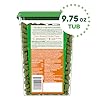What makes feral kittens so unique, and how can we help them thrive? These kittens are born to wild cats and need special care to become pets. It’s important to understand their behavior and needs to give them the right care.
Exploring the world of feral kittens, we’ll look at the challenges and joys of caring for them. We’ll cover their development, socialization needs, and more. This guide is for both seasoned animal lovers and newcomers, aiming to help you positively impact their lives.
Key Takeaways
- Feral kittens require special care and socialization to become suitable pets.
- Understanding feral kittens meaning and behavior is crucial in providing the right care and attention.
- Feral kittens care involves patience, dedication, and the right approach.
- Socializing feral kittens can take anywhere from a few days to weeks, depending on their age and exposure to humans.
- Providing the right nutrition and health care is essential for the well-being of feral kittens.
- Spaying or neutering kittens at 8 weeks old and at least 2 pounds is recommended for their health and wellbeing.
Understanding Feral Kittens: Basic Definitions and Characteristics
Feral kittens live in the wild and don’t want to be around people. They are different from stray kittens, which may have had homes before. Feral kittens are born to fend for themselves.
What Makes a Kitten Feral?
A kitten is feral if it doesn’t know humans well. This lack of human interaction makes them scared and focused on staying safe.
Difference Between Stray and Feral Kittens
Stray cats may have been pets but got lost. They might still be friendly to people. Feral cats, however, are truly wild and never knew humans.
| Aspect | Stray Kittens | Feral Kittens |
|---|---|---|
| Human Interaction | May approach humans | Avoid humans |
| Background | Often have been pets | Born and raised in the wild |
| Behavior | Less fear, more approachable | Feral kittens hissing, fear-based behaviors |
Common Behavioral Traits
Feral kittens hiss, hide, and stay away from people. They use their instincts to survive, making it hard for humans to interact with them.
Yaheetech 54in Cat Tree, Multi-Level Cat Tower with Spacious Kitten-ear Perch, 2 Cozy Caves, Scratching Posts, Climbing Ladder, 2 Plush Balls, Durable Pet House Furniture for Indoor Kittens, Dark Gray
Bedsure Cute Cat Couch for Pets – Fluffy Cat beds with Premium Soft Corduroy Fleece, Fuzzy Cats beds for Indoor Cats with Removable Washable Cover, Supportive Pet Sofa, 24inch, Cream
Purina Friskies Dry Cat Food Gravy Swirl’d With Flavors of Chicken, Salmon and Gravy – 3.15 lb. Bag
TP-Link Tapo 2K Pan/Tilt Security Camera for Baby Monitor, Dog Camera w/Motion Detection, 2-Way Audio, Siren, Night Vision, Cloud & SD Card Storage, Works with Alexa & Google Home, 2-Pack (C210P2)
Voyager Step-in Pet Harness – All Weather Mesh, Adjustable Step in Harness for Cats and Dogs by Best Pet Supplies – Pink, M
Purina Friskies Dry Cat Food Seafood Sensations With Salmon, Tuna, and Shrimp Flavors – 22 lb. Bag
ChomChom Roller Pet Hair Remover – Original Size Reusable Lint Roller for Cat & Dog Hair on Furniture, Couch, Carpet, Car, Rugs & Bedding – Portable, Eco-Friendly (White)
Purina Friskies Wet Cat Food Variety Pack, Tasty Treasures Prime Filets (With Ocean Fish and Tuna, With Chicken and With Turkey) – 5.5 Ounce (Pack of 12)
Self Warming Cat Bed Self Heating Cat Dog Mat 24 x 18 inch Extra Warm Thermal Pet Pad for Indoor Outdoor Pets with Removable Cover Non-Slip Bottom Washable Non Electric
Potaroma Cat Toys Saury Fish, 3 Pack, Catnip Crinkle Sound, Soft and Durable, Interactive Kitten Kicker for Indoor Kitty Exercise 9.4 Inches for All Breeds
The Natural Development of Feral Kittens
Feral kittens start by staying close to their nest for the first few weeks. Around 4-5 weeks of age, they begin to explore. This is a key time for them to learn and grow.
Many wonder when do feral kittens come out of hiding. As they grow, they become more curious and explore further. This helps them learn to hunt and move around.
It’s common for feral kittens to disappear sometimes. This is normal as they grow. They might leave to find food or to mark their territory. Knowing this helps those who care for or socialize them.
- 4-5 Weeks: Begin exploring beyond the nest.
- 6-8 Weeks: Start hunting small prey.
- 9-12 Weeks: Increase independence and social interactions.
Knowing these stages is key for helping them. It’s best for socialization efforts or Trap-Neuter-Return (TNR) programs. Sadly, only 2% of feral cats in the U.S. are neutered. TNR is crucial for managing their numbers.
| Age | Developmental Milestones | Behavioral Traits |
|---|---|---|
| 0-4 Weeks | Depend on mother for warmth and feeding | Mostly hide and sleep |
| 4-5 Weeks | Start exploring surroundings | Begin playful behaviors |
| 6-8 Weeks | Develop hunting skills | More independent movements |
| 9-12 Weeks | Increase social interactions | Establish individual territories |
Mother-Kitten Relationship in Feral Cats
The bond between a feral mom cat and her kittens is complex and vital. It’s key for their survival. Knowing these dynamics is crucial for helping feral cat populations.
Natural Bonding Patterns
Feral mom cats bond with their kittens through grooming and nursing. This close interaction teaches kittens vital survival skills.
When Kittens Naturally Separate
Kittens start weaning at about four weeks. But in feral colonies, they may stay with their mom for months. Several factors influence when they separate:
- Availability of food sources – Helps the mother support her kittens.
- Safety of the environment – Makes early independence less necessary.
- Genetic factors – Some breeds wean later than others.
Impact of Human Intervention
Intervening in the natural separation can harm the mother-kitten bond. Programs like Wait Until 8® suggest waiting until kittens are ready for spaying or neutering. Early separation can cause stress and make socializing feral kittens harder.
Temptations Creamy Puree Variety Pack of Squeezable Cat Treats, 0.42 oz. Tubes, 24 Count
Greenies Feline Adult Dental Cat Treats, Oven Roasted Chicken Flavor, 9.75 oz. Tub
ARM & HAMMER Clump & Seal SLIDE Platinum Multi-Cat Clumping Cat Litter, 14-Day Odor Control, EZ Clean Technology, 18 lbs – No Scrubbing, Powerful Odor Eliminator
Heated Water Bowl for Dog Cat,1.22 Gallon,Outdoor Waterproof Heated Pet Water Dish with 79″ Chew Resistant Cord for Rabbit, Chicken, Duck, Squirrel (Dark Blue)
IAMS Proactive Health Adult Healthy Dry Cat Food with Chicken, 22 lb. Bag
Bumilily Pet Hair Removal Glove for Cats and Dogs – Electrostatic Pet Hair Remover Glove | Reusable Brush Pet Hair Remover for Couch, Carpet, Car Seat & Laundry
Sheba Perfect Portions Wet Cat Food Pate with Sustainable Salmon, Signature Seafood Entree, and Tender White Fish and Tuna Entree Variety Pack, 2.6 oz. Twin Pack Trays (24 Count, 48 Servings)
47% OffTemptations MixUps Surfer’s Delight Flavor Crunchy and Soft Cat Treats, 16 oz. Tub
Pure Path Pet Hair Remover – Purepath Hair Removal Glove – Electrostatic Reusable Washable Cats & Dogs Magic Brush for Couch, Clothing, Carpet, Furniture, Car Seats (Yellow)
$18.99 (as of November 18, 2025 19:16 GMT +00:00 – More infoProduct prices and availability are accurate as of the date/time indicated and are subject to change. Any price and availability information displayed on [relevant Amazon Site(s), as applicable] at the time of purchase will apply to the purchase of this product.)PetSafe ScoopFree Premium Crystal Cat Litter – Outperforms Clay Litter – Refill Packs – Reusable Tray Compatible – Fresh Scent – 4.3 lb Bags – 2 Pack
Identifying Feral Kitten Behavior Patterns
Understanding feral kitten behavior is key to socializing them. At first, they show fear and aggression. They might hiss or swat to protect themselves. But, they also explore their surroundings with caution, always ready for danger.
As they get used to humans, their behavior changes. You might see signs a feral cat trusts you like:
- Less hissing or avoiding you.
- Coming for food on their own, showing they like being around you.
- Letting you touch them gently, showing they feel safe with you.
- Wanting to be near you more, looking for company.
Seeing these signs shows how well they’re doing. It’s important to be patient and consistent. Each kitten is different, and they may show trust at their own pace. By watching their behavior closely, you can help them feel safe and loved.
Essential Care Requirements for Feral Kittens
It’s key to give feral kittens the right care for their survival and happiness. Learning how to care for feral kittens means knowing about their food, health, and living space needs.
Nutritional Needs
Figuring out what to feed feral kittens is important for their growth. They need a diet full of protein to grow well. Choose high-quality kitten food that has all the nutrients they need. In cold weather, give them more food to keep their energy up.
- Provide kitten-specific dry or wet food.
- Ensure access to fresh water daily.
- Increase food portions for pregnant or nursing mothers.
Health Considerations
Regular health checks are a big part of how to care for feral kittens. Vaccines keep them safe from diseases, and parasite control stops infestations. Taking them to the vet ensures they get the care and shots they need.
- Schedule routine veterinary exams.
- Administer vaccinations as recommended.
- Implement parasite prevention measures.
Environmental Requirements
Creating a safe and warm place is crucial for how to care for feral kittens. Their shelters should be well-insulated with straw and raised to keep them dry. Feeding them at the same times every day helps keep them healthy and reduces stress.
- Use shelters sized at least 2×3 feet and 18 inches high.
- Elevate shelters six inches off the ground.
- Provide straw for insulation to retain body heat.
The Critical Socialization Window
Learning how to socialize feral kittens is key for their happiness at home. Kittens are most open to humans from 2 to 7 weeks old. This is the best time for gentle touch and fun play.
To socialize them well, feed them by hand, make a cozy spot, and introduce toys slowly. Here’s what works:
- Hold them gently often to build trust.
- Use special kitten food to link them to humans.
- Keep their space safe and quiet to lower stress.
So, can 12 week old feral kittens be tamed? Yes, they can, but it takes more time and effort. Kittens over 12 weeks might be harder to tame and could stay shy.
“Early and consistent interaction significantly increases the likelihood of taming feral kittens, even beyond the critical window,” says Dr. Emily Hart, a feline behaviorist.
While the best time for socializing is early, older kittens can still adjust with hard work. Remember, every kitten is different, and patience is crucial.
| Age Range | Socialization Potential | Recommended Techniques |
|---|---|---|
| 2-7 Weeks | High | Frequent handling, hand-feeding, gentle play |
| 8-12 Weeks | Moderate | Consistent positive interactions, patience, gradual exposure |
| 12+ Weeks | Variable | Extended socialization efforts, specialized techniques, potential professional help |
Common Health Issues in Feral Kittens
Feral kittens face many health challenges that need careful feral kittens care. It’s important to know these issues to help them.
Eye Problems and Solutions
Feral kittens often have eye problems, like conjunctivitis, due to infections or harsh environments. Signs include red eyes, discharge, and swelling. To treat this, kittens need regular cleaning and sometimes vet care for medicine.
Parasites and Prevention
Parasites are a big risk for feral kittens. They can have internal parasites like Giardia and Coccidia, or external ones like fleas and ticks. To prevent this, kittens need regular deworming and flea treatments as part of feral kittens care.
Vaccination Requirements
Vaccinations are key to protect feral kittens from diseases like panleukopenia and feline calicivirus. Trap-Neuter-Return (TNR) programs help kittens get vaccinated. This improves their health and reduces disease in colonies.
| Health Issue | Symptoms | Solutions |
|---|---|---|
| Eye Infections | Redness, discharge, swelling | Regular cleaning, veterinary medications |
| Internal Parasites | Diarrhea, weight loss | Deworming treatments |
| External Parasites | Itching, hair loss | Flea and tick treatments |
| Viral Diseases | Fever, lethargy | Vaccinations through TNR programs |
Safe Capture Techniques and Approaches
Catching feral kittens needs patience and the right methods. It’s key to keep them safe and healthy. Knowing how to catch feral kittens helps a lot.
Humane traps are the best way to catch feral kittens. Here are some tips:
- Choose a bigger trap for kittens and their moms.
- Use natural materials to cover the trap and make it less scary.
- Try different baits like tuna or sardines to attract the cats.
- Place traps where cats often go, like near food.
- Clean traps with bleach after each use to remove scents.
If you want to catch feral kittens without a trap, try these methods:
- Use a kitten-sized humane box trap for smaller kittens.
- Try distraction techniques like laser pointers to guide kittens into a safe space.
- Use recordings of kittens meowing to attract mother cats.
It’s very important to keep both kittens and handlers safe. Don’t use the wrong equipment or try to catch kittens by hand. This can stress or hurt them. Being patient and persistent is crucial to catch feral kittens safely.
| Method | Pros | Cons |
|---|---|---|
| Humane Traps | Safe for kittens, effective for multiple cats | Requires regular monitoring, initial setup effort |
| Manual Capture | No equipment needed, immediate interaction | Higher risk of injury, more stressful for kittens |
| Distraction Techniques | Non-invasive, can be combined with other methods | Less reliable, requires careful timing |
The Taming Process: What to Expect
Learning how to tame feral kittens is a slow and careful journey. It usually takes two to six weeks. This time depends on the kitten’s age and past experiences.
Initial Contact Methods
Start by making positive connections with food. Place meals in the same spot every time. This makes the kitten feel safe and less scared.
Building Trust Gradually
Be near the feeding area but don’t force them to come to you. Let the kitten come to you when it’s ready. Use gentle gestures and stay calm.
Progress Indicators
Look for signs like the kitten coming to you, hiding less, and playing. Watching these signs helps you see how well they’re doing.
About 10% of feral kittens might not fully adjust to living with humans. This shows the need for patience and understanding.
Feeding and Nutrition Guidelines
Proper nutrition is key for feral kittens to grow healthy. Knowing what to feed them at each stage is important. This ensures they get the right nutrients.
Newborn kittens need kitten formula and must be bottle-fed every two to three hours. This helps them grow fast, aiming for a daily weight gain of ½ to ¾ ounce.
When kittens are three to four weeks old, they start weaning. Start giving them soft, high-quality kitten food mixed with formula. By five to six weeks, they should eat canned food without water.
- Provide multiple small meals daily to mimic natural feeding behaviors.
- Ensure access to fresh water at all times to maintain hydration.
- Choose kitten-specific foods with at least 30% protein to support growth.
By eight to ten weeks, most kittens are fully weaned. They can eat growth-specific foods until they are about ten months old. Watch their portion sizes and feeding schedules to avoid obesity, especially in neutered kittens who need more calories.
Consistent care for feral kittens means giving them a balanced diet. This diet should be rich in essential amino acids and fatty acids. These are crucial for their development and health.
Creating a Safe Environment for Rehabilitation
Creating a safe and cozy space is key for feral kittens care. A well-prepared area helps kittens feel safe. It also supports their journey to becoming feral kittens as pets.
Indoor Setup Requirements
Choose a quiet, warm spot for the kittens. Use soft bedding and add hiding spots for their safety. Keeping the temperature steady is vital for their health.
Safety Considerations
Make your space kitten-proof by removing dangers like toxic plants and small objects. Make sure windows and doors are closed to prevent escapes. Always check for potential hazards.
Necessary Equipment
Stock up on feeding bowls, litter boxes, and scratching posts. Toys help with socialization and keep them busy. Also, have grooming tools and first aid supplies ready for any health issues.
Signs of Progress in Feral Kitten Socialization
Understanding feral kitten behavior is key to seeing their socialization progress. A big sign they trust you is when they show less fear. They might even come to you instead of hiding, showing they feel more comfortable.
When they start to show curiosity, it’s a good sign too. If they watch you from afar or check out new things, it means they trust you more.
Accepting petting is a big step. If they let you stroke or hug them without running away, it shows they feel safe and affectionate towards you.
Playful behavior is another clear sign of progress. Playing with toys or joining in interactive games shows they feel secure enough to be playful. This is a big step away from just surviving.
Remember, every kitten moves at their own pace. Young kittens, 5-8 weeks old, might adjust faster. But kittens over two months might need more time and patience. Keep being positive and consistent to help them trust and grow more.
Managing Common Behavioral Challenges
Feral kittens often show fear-based behaviors, making it hard to interact with them. It’s key to understand these behaviors to manage them well.
- Hissing: A common sign of fear or discomfort.
- Scratching: Indicates a desire for personal space.
- Biting: May occur during overstimulation or fear.
- Extreme Fearfulness: Can prevent kittens from engaging with humans.
To tackle these behaviors, try these strategies:
- Patience: Let kittens come to you at their own pace.
- Positive Reinforcement: Reward calm behavior with treats.
- Safe Spaces: Give areas where kittens can retreat and feel safe.
- Gradual Socialization: Slowly introduce human interaction to build trust.
| Behavior | Cause | Management Strategy |
|---|---|---|
| Hissing | Fear or discomfort | Remain calm, avoid sudden movements |
| Scratching | Need for personal space | Provide scratching posts, limit handling |
| Biting | Overstimulation or fear | Use toys for play, avoid direct hand contact |
| Extreme Fearfulness | Lack of trust in humans | Create safe environments, gradual exposure |
Legal and Ethical Considerations
When you find feral kittens near me, knowing the laws and ethics is key. Local rules can change a lot, affecting how you help these animals.
Local Regulations
Every place has its own laws about feral cats. It’s important to check and follow your area’s rules to stay out of trouble.
Best Practices
Using ethical methods is vital for treating feral kittens right. Here are some good ways to do it:
- Join trap, test, neuter, vaccinate, and release (TTNVR) programs.
- Don’t feed feral cats in public to stop them from having too many babies.
- Support ways to control feral cat numbers without killing them.
Community Resources
Many groups help with feral kittens what to do:
- Local animal groups help with trapping and neutering.
- Vets work with communities on TNR programs.
- Education helps people own pets responsibly, which helps reduce feral cats.
When to Seek Professional Help
Caring for feral kittens can be tough. Knowing when to get help is key for their health. If a kitten has serious health issues, like eye problems or injuries, see a vet fast.
Behavioral problems, like fear or aggression, might need an animal behaviorist. These experts can help improve the kitten’s behavior. This makes taming easier.
Experienced feral cat rescuers and shelters are great resources. They offer advice and support, especially when you’re short on resources. Shelters also run Trap-Neuter-Return (TNR) programs to manage cat populations.
Knowing when to ask for help ensures feral kittens get the best care. By getting professional help, you boost their chances of being adopted. This improves their lives greatly.
































































































































































































